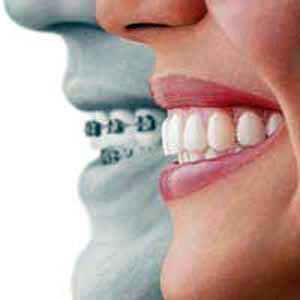We all want brighter and whiter teeth for sure; it is our right to look good and fab smile. However, tooth bleaching is not necessarily the best solution for you... or for me.
Most people decide to take over the bleaching treatment by themselves getting over-the-counter whitening products, however the wisest thing to do is going to the dentist to get an evaluation of your dental condition, and therefore recommend the best dental solution for your case.
 Depending on the type and condition of your dental stains, you dentist will suggest among these the best tooth bleaching treatment for you:
Depending on the type and condition of your dental stains, you dentist will suggest among these the best tooth bleaching treatment for you:
- Professional dental cleaning to get rid of external stains produce by food and tobacco.
- Bleaching toothpaste to get rid of shallow stains. (In order to get better results you may use teeth whitening gel and teeth whitening strips).
- Professional dentist bleaching or home bleaching is for the hardest yellow stains.
- Veneers and fillings are for reconstructing the most affected teeth or getting specific results.
Great, seems I have plenty of options, but still what works better for me?
If you have very yellow teeth you are quite lucky. That’s right, you are because your teeth respond better to bleaching than those with a grayish o brownish coloring, or even better than teeth stained by tetracycline (a.k.a. Sumycin, Terramycin, Tetracyn, Panmycin, etc.) and dental flouring can not get totally white after bleaching.
If you have veneers, fillings or crowns on your frontal teeth, dental bleaching is NOT for you because the dental bleacher will have no effect on the material of these dental applications.
If you have sensitive teeth and or periodontal disease, you should avoid chemical tooth whitening since they can irritate your gums.
If you have
serious teeth and jaw problems, dental crowns and veneers are way better you give you a perfect looking white smile.
Read More!
 Step 1: Take some oranges and lemons, peel them and put the skins to dry on fire. Toast them to make them get dry but do not let them get burnt.
Step 1: Take some oranges and lemons, peel them and put the skins to dry on fire. Toast them to make them get dry but do not let them get burnt.
 When you fee you child with soft, mashed, minced or grinded foods you are not making him chew enough and this is the main cause of misaligned or crooked teeth due to the lack of space in the gums.
When you fee you child with soft, mashed, minced or grinded foods you are not making him chew enough and this is the main cause of misaligned or crooked teeth due to the lack of space in the gums.  To get Invisalign braces you have to consult Invisalign certified dentists (this is a relatively new dentistry treatment, so there are not many good orthodontists out there doing it) that will determine the best alignment for both your appearance and your bite.
To get Invisalign braces you have to consult Invisalign certified dentists (this is a relatively new dentistry treatment, so there are not many good orthodontists out there doing it) that will determine the best alignment for both your appearance and your bite.  Depending on the type and condition of your dental stains, you dentist will suggest among these the best tooth bleaching treatment for you:
Depending on the type and condition of your dental stains, you dentist will suggest among these the best tooth bleaching treatment for you:  This kind of dental cavities mainly appear in 6-month and four to five-year-old children. It starts destroying the enamel. Small white stains appear in your baby’s teeth that eventually go yellow, spread and become darker.
This kind of dental cavities mainly appear in 6-month and four to five-year-old children. It starts destroying the enamel. Small white stains appear in your baby’s teeth that eventually go yellow, spread and become darker.  Titanium dental implants are prone to get loose and produce infections as gingivitis and periodontitis due to the incompatibility between the bone and the dental implant.
Titanium dental implants are prone to get loose and produce infections as gingivitis and periodontitis due to the incompatibility between the bone and the dental implant.